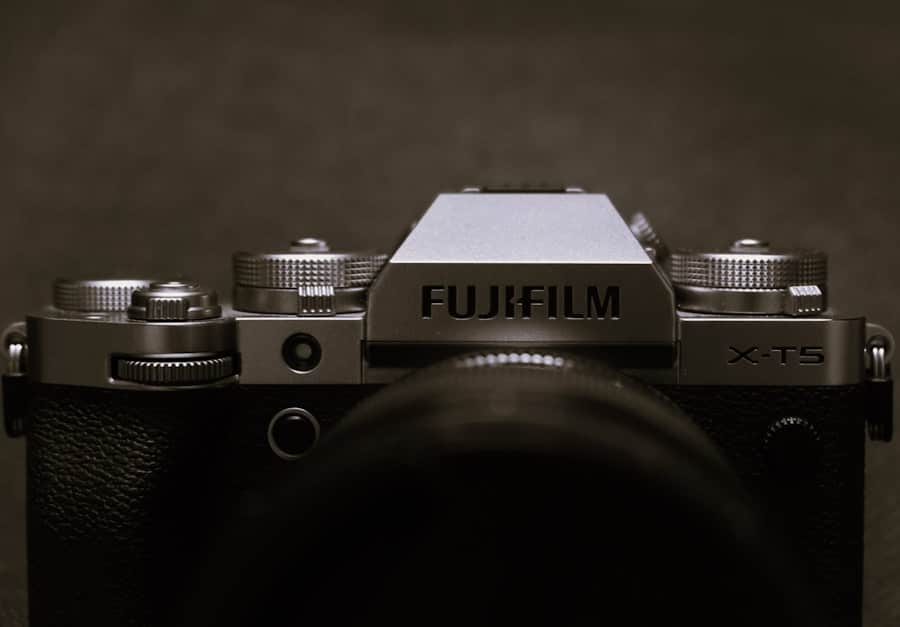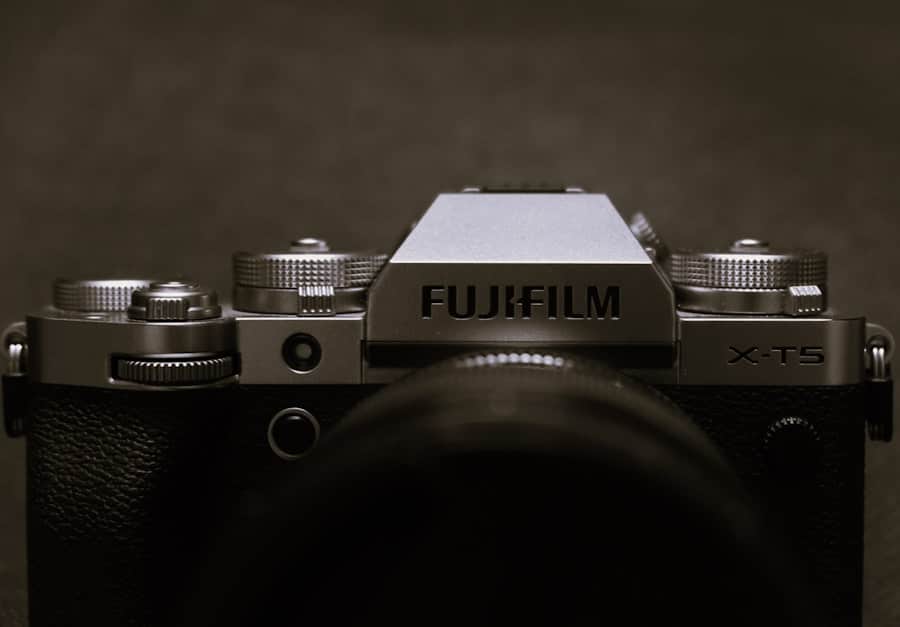Augmented Reality (AR) filters have revolutionized the way we interact with digital content, particularly on social media platforms. These filters overlay digital elements onto the real world, allowing users to enhance their photos and videos with imaginative effects that can range from whimsical to hyper-realistic. The technology behind AR filters has evolved significantly, enabling creators to design experiences that are not only visually captivating but also interactive and engaging.
As a result, AR filters have become a staple in the toolkit of content creators, brands, and influencers looking to capture attention and convey messages in innovative ways. The rise of AR filters can be attributed to the increasing accessibility of smartphones equipped with advanced cameras and processing capabilities. Platforms like Instagram, Snapchat, and TikTok have integrated AR technology into their ecosystems, allowing users to apply filters with just a tap.
This democratization of technology has empowered individuals to express their creativity and share unique perspectives with their audiences. As AR filters continue to gain popularity, understanding how to effectively choose and utilize them becomes essential for anyone looking to enhance their storytelling capabilities in the digital landscape.
Key Takeaways
- AR filters are digital overlays that can be added to photos and videos to enhance storytelling and engagement on social media platforms.
- When choosing the right AR filter for your story, consider the mood, theme, and message you want to convey to your audience.
- Use AR filters effectively by experimenting with different filters, customizing them to fit your brand, and engaging with your audience’s feedback.
- Incorporate AR filters into your social media stories by using them to create interactive and visually appealing content that resonates with your audience.
- Create a narrative with AR filters by using them to enhance the storytelling aspect of your content and create a cohesive visual experience for your audience.
Choosing the Right AR Filter for Your Story
Selecting the appropriate AR filter is crucial for ensuring that your story resonates with your audience. The right filter should align with the theme and tone of your content while enhancing the overall narrative rather than detracting from it. For instance, if you are sharing a lighthearted moment with friends, a playful filter that adds animated elements or fun graphics can amplify the joy of the experience.
Conversely, if your story revolves around a serious topic, a more subdued filter that emphasizes realism may be more appropriate. When choosing an AR filter, consider the emotions you want to evoke in your audience. Filters can manipulate colors, add textures, or introduce fantastical elements that can significantly alter the mood of your content.
For example, a warm-toned filter can create a cozy atmosphere, while a cool-toned filter might evoke feelings of calmness or introspection. Additionally, it’s essential to think about your brand identity or personal style; the filters you choose should reflect your unique voice and aesthetic. By carefully curating your selection of AR filters, you can create a cohesive visual narrative that captivates viewers and encourages them to engage with your content.
Tips for Using AR Filters Effectively

To maximize the impact of AR filters in your storytelling, it’s important to use them thoughtfully and strategically. One effective approach is to experiment with different filters before settling on one that complements your content. Many platforms allow users to preview how various filters will look in real-time, enabling you to assess their suitability for your story.
This trial-and-error process can lead to unexpected discoveries and inspire creative ideas that enhance your narrative. Another key tip is to avoid overusing filters, as excessive application can overwhelm viewers and detract from the core message of your story. Instead, aim for a balanced approach where the filter enhances rather than overshadows the content.
Subtlety can often be more powerful than bold effects; sometimes, a simple enhancement can make a significant difference in how your story is perceived. Additionally, consider incorporating interactive elements within the filter itself, such as polls or quizzes, which can encourage audience participation and foster a deeper connection with your content.
Incorporating AR Filters into Your Social Media Stories
Integrating AR filters into your social media stories can elevate your content and make it more engaging for viewers. One effective method is to use filters that align with specific themes or events. For example, during holidays or special occasions, themed filters can add a festive touch to your stories, making them more relatable and enjoyable for your audience.
This seasonal relevance not only captures attention but also encourages viewers to share their own experiences using similar filters. Moreover, consider using AR filters as a storytelling device that progresses throughout your narrative. For instance, you might start with a simple filter that sets the scene and gradually introduce more complex effects as the story unfolds.
This technique can create a sense of anticipation and keep viewers engaged as they follow along.
Creating a Narrative with AR Filters
Crafting a compelling narrative using AR filters involves more than just applying effects; it requires thoughtful planning and creativity. Start by outlining the key elements of your story—what message do you want to convey? Who is your target audience? Once you have a clear vision, you can select filters that enhance each segment of your narrative. For example, if you’re telling a story about personal growth, you might begin with a filter that represents uncertainty or struggle before transitioning to one that symbolizes achievement or clarity. In addition to visual elements, consider how sound and music can complement your AR filters to create a richer storytelling experience. Many platforms allow users to add audio tracks or sound effects that can enhance the emotional impact of their stories. By synchronizing audio cues with visual changes in the filter, you can create a seamless narrative flow that captivates viewers and keeps them invested in your content.
Engaging Your Audience with AR Filters

Engagement is a critical component of successful storytelling on social media, and AR filters offer unique opportunities to connect with your audience. One effective strategy is to create interactive experiences that invite viewers to participate actively in your story. For instance, you could design a filter that allows users to customize their appearance or add elements related to your narrative.
This level of interactivity not only makes the experience more enjoyable but also encourages users to share their creations with their networks. Another way to engage your audience is by hosting challenges or contests that incorporate AR filters. Encourage followers to use specific filters in their own stories and tag your account for a chance to be featured or win prizes.
This approach not only boosts engagement but also fosters a sense of community among your followers as they share their interpretations of your narrative through their unique lenses.
Collaborating with Others to Enhance Your Storytelling
Collaboration can significantly enhance the effectiveness of AR filters in storytelling by bringing diverse perspectives and creativity into the mix. Partnering with other content creators or brands allows you to combine resources and expertise, resulting in richer narratives that resonate with broader audiences. For example, if you’re working on a campaign related to environmental awareness, collaborating with an influencer who specializes in sustainability can lend credibility and depth to your message.
When collaborating on AR filter projects, consider co-creating custom filters that reflect both parties’ styles and values. This not only strengthens the partnership but also provides followers with fresh content that feels authentic and engaging. Additionally, cross-promoting each other’s stories featuring the collaborative filter can expand reach and attract new followers who are interested in both creators’ perspectives.
Exploring New Possibilities with AR Filters
The landscape of AR technology is constantly evolving, presenting new opportunities for creativity and innovation in storytelling. As advancements continue to emerge, creators should remain open to exploring novel applications of AR filters beyond traditional uses. For instance, integrating AR filters into live streaming events can create immersive experiences that captivate audiences in real-time.
Viewers can interact with dynamic elements while engaging with live content, blurring the lines between reality and digital enhancement. Furthermore, as artificial intelligence (AI) becomes increasingly integrated into AR development, creators will have access to more sophisticated tools for designing personalized experiences. AI-driven filters could analyze user preferences and behaviors to deliver tailored content that resonates on an individual level.
This level of customization could revolutionize how stories are told on social media platforms, allowing for deeper connections between creators and their audiences. In conclusion, AR filters represent an exciting frontier in digital storytelling that offers endless possibilities for creativity and engagement. By understanding how to choose the right filters, use them effectively, and incorporate them into narratives, creators can elevate their content and connect more meaningfully with their audiences.
In the realm of digital creativity, AR filters have emerged as a powerful tool for storytelling, allowing creators to overlay digital elements onto the real world and craft immersive narratives. For those interested in exploring the broader landscape of technological advancements that complement such creative tools, the article on What Trends Are Predicted for 2023 offers valuable insights. This piece delves into the anticipated technological trends that are set to shape the future, providing context and inspiration for how AR filters and other innovations can be leveraged for creative storytelling.
FAQs
What are AR filters?
AR filters, or augmented reality filters, are digital overlays that can be applied to photos and videos to add special effects, animations, and interactive elements. These filters can be used on social media platforms and messaging apps to enhance storytelling and create engaging content.
How can AR filters be used for creative storytelling?
AR filters can be used to enhance storytelling by adding visual elements that complement the narrative. For example, filters can be used to create a specific mood or atmosphere, convey emotions, or illustrate key plot points. They can also be used to engage the audience and encourage interaction with the content.
Which platforms support AR filters?
Many social media platforms and messaging apps support AR filters, including Instagram, Facebook, Snapchat, and TikTok. These platforms provide users with a variety of AR filter options that can be used to enhance storytelling and create visually compelling content.
How can I create my own AR filters?
There are several tools and platforms available for creating custom AR filters, such as Spark AR Studio, Lens Studio, and Snapchat’s Lens Studio. These tools provide users with the ability to design and customize their own AR filters, allowing for creative storytelling through unique and personalized visual effects.
Are there any limitations to using AR filters for storytelling?
While AR filters can be a powerful tool for creative storytelling, it’s important to consider potential limitations, such as accessibility and inclusivity. Not all users may have access to the latest devices or platforms that support AR filters, so it’s important to consider alternative storytelling methods to ensure that content reaches a wide audience.

